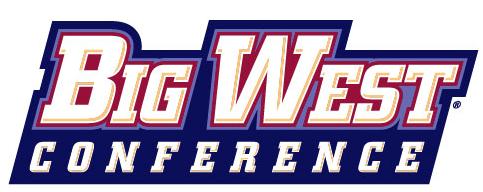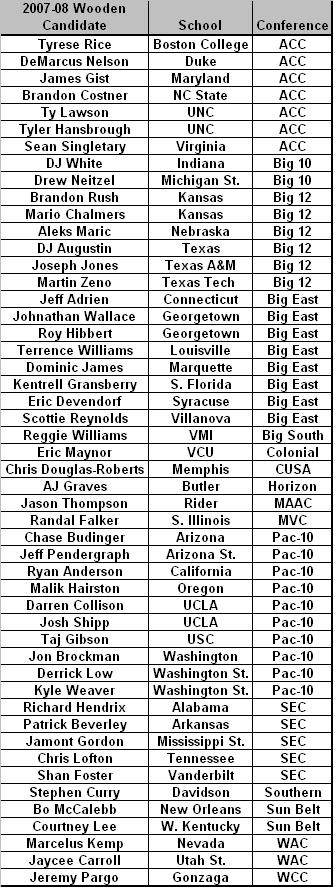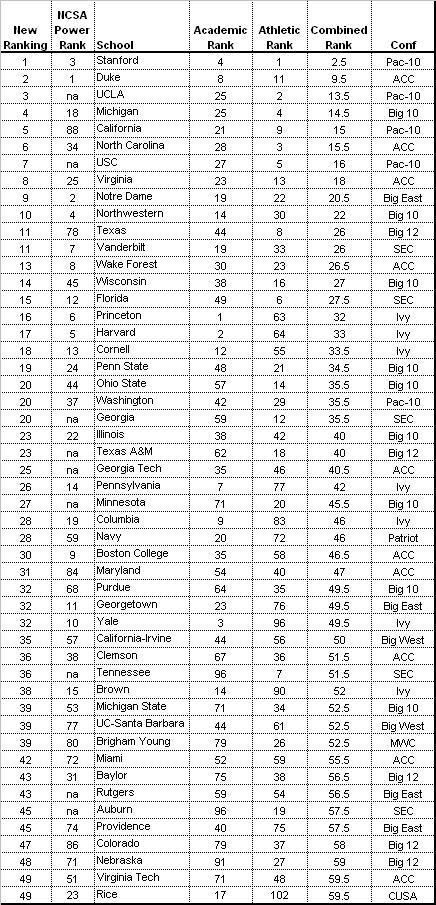2008-09 Conference Primers: #21 – Big West
Posted by rtmsf on October 21st, 2008Ryan ZumMallen, LBPOSTSports columnist, is the RTC correspondent for the Big West conference.
Predicted Order of Finish:
- Cal St. Northridge
- UC Santa Barbara
- Long Beach State
- Pacific
- UC Irvine
- UC Davis
- Cal St. Fullerton
- Cal Poly
- UC Riverside
What You Need To Know (WYN2K). I know what you’re thinking: no good teams ever come out of the Big West. Oh yeah? What about 2006-07’s Long Beach State 49ers who ran roughshod over their schedule to a 24-8 record and an NCAA berth… losing to Tennessee by 35. Or last year’s three-way tie for first? UC Santa Barbara, Cal State Northridge and Cal State Fullerton each won 12 conference games and two earned postseason berths… one bowing out in the NCAA opener and one in the NIT.
Ok, there hasn’t been much success outside of the conference lately – and last year produced some colossal stinkers – but that doesn’t mean that intense basketball isn’t being played within the Big West’s confines. After a conference flooded with seniors last season, nearly every team is starting anew, making for one of the most wide-open conferences in the country. All you need is one stud to will your team to victory, and if 2007 Fullerton product and recent Sacramento Kings signee Bobby Brown is any indication, it is definitely possible for raw talent to be developed in the Big West. Don’t expect the top teams to feast on the bottom-feeders again – all it takes is one hot hand for any team to have a shot on any night. So let’s get into it!
Bottom Feeders. UC Riverside, Cal Poly SLO and Cal State Fullerton. I mention them now because I shan’t be mentioning them again. All three lost a vast majority of their scoring to graduation, and senior leadership is vital in the Big West. Expect painful rebuilding from these three, although Fullerton’s Josh Akognon (video footage below) will win a few games for the Titans all by himself. The 5’11 guard averaged 20 ppg last year and won Big West Tournament MVP honors, but with only 2 returners and Akognon the only returning starter, it’ll be a long year in the cellar for CSF.
Middle of the Pack.
-
One team that you can (surprisingly) expect to emerge from that very cellar this year is UC Davis. Yes, the UC Davis that went 2-14 in the Big West last season. Stop laughing. Last year’s Aggies fielded zero seniors and this year’s edition has five. They return a trio of senior starters that scored 28.4% of the team’s points, boast two key transfers in Joe Harden and Todd Lowenthal and look to Big West Freshman of the Year Mark Payne to step us as a sophomore. With all of that, I’ve still got them pegged in 6th because, c’mon, it’s UC Davis.
-
UC Irvine gets the nod for 5th in the Big West, even after losing their top two scorers who brought in a combined 29.5ppg. They do return their other three starters, though, and while the team is not particularly heavy on seniors or explosive guardplay, last year’s squad won 9 of 12 down the stretch so these guys know how to win. Adding three recruits sized 6’8” or taller does not hurt, either. But the Anteaters could well fall prey to the experience of UC Davis, and certainly neither is worthy of a Top 4 spot.
-
The Pacific Tigers come in 4th, based yet again almost entirely on the genius of the Big West Conference’s greatest basketball mind, head coach Bob Thomason. Thomason consistently squeezes more productivity out of less talent than any other BW coach, and I’ve learned the hard way not to bet against the Tigers. They don’t have the talent to dominate this year, but the high-flying Anthony Brown enters his senior season, and I am intrigued to see what magic Thomason has worked with the 6’9” forward who wowed us with his potential and now will have to show us what’s been done with it. What wins games in the Big West? Guards. Anyone who gives senior sharpshooter Chad Troyer more than an inch of room deserves to be cut and sent to UC Riverside.
Top Tier.
-
As we saw last season, the cream of the Big West crop can be extremely competitive. So these next three teams could end up in any of the top spots, or even in a three-way tie for first like the Trio of ’08. They’re clearly the most talent-laden squads and have the best shot at the hardware. At the rear of the triumvirate is – pains me to say it – Long Beach State. Disclosure: I’m a graduate, and last season’s 6-25 campaign was one of my life’s more painful experiences. But we relied heavily on first-year coach Dan Monson’s genius and junior guard Donovan Morris’ magic. This year, we’ll again need plenty of both, but have added more ammunition than a Howitzer tank to back them up. The 6’3” Morris is the only returning All-Big West honoree in the conference, led the Big West in scoring and is the likely preseason Player of the Year. But the 49ers also add three transfers and a four-member freshman class that is oozing with raw talent in one-guard Casper Ware and freakish swingman Larry Anderson. The experience and talent are there after recording barren levels of both last year. My pick is 3rd place and possibly higher – it’s just tough to get past the oddness of picking a 6-win team to win the conference, even if it’s my own.
-
Here then, we arrive at #2. This team could definitely end the season in a lower position than this, and probably doesn’t have much chance at the top spot due to a lack of real scoring power or explosive guards. But a notoriously stingy defense and hard-nosed hustle, coupled with eight returners (including three starters) earns the UC Santa Barbara Gauchos the second spot. Well-rounded forward Chris Devine begins collecting Social Security this year enters his sixth season with UCSB after being granted another year of eligibility due to injuries. His leadership will be invaluable as the Gauchos look to recapture the magic after being one of the three teams tied for the conference title in ’08. They’ll rely heavily on a suffocating half-court defense that allows few second chances, and will look for junior James Powell on the perimeter after shooting 46.7% from three-point land and averaging 12.3 ppg last season. Experience and guard-play win out, and the Gauchos legendary grit put them in a class above (most of) the rest.
-
Experience experience experience. The Cal State Northridge Matadors (#16 NCAA) field five seniors and eight juniors on their roster, including last year’s conference leaders in rebounds, assists and blocked shots. They too shared the Big West title and have a great shot to repeat with Tremaine Townsend returning to terrorize Big West post players for yet another season. Townsend led the conference in rebounds with 9.8 rpg, and blocked shots with 1.3 bpg. The Matadors led the conference in team rebounding, and senior guard Josh Jenkins will look to improve upon his conference leading 6.4apg as well. CSUN head coach Bobby Braswell has never won an outright Big West title in 13 years at the helm, but this is his best chance ever to break the streak.
RPI Boosters.
-
California @ Pacific (11/15/08)
-
Long Beach St. @ Wisconsin (11/16/08)
-
Cal St Northridge @ Stanford (11/18/08)
-
UNC @ UCSB (11/21/08)
-
Wake Forest v. Cal St Fullerton (11/27/08)
-
Cal St Northridge @ UCLA (12/7/08)
-
Long Beach St. @ Syracuse (12/13/08)
65 Team Era. Due to UNLV’s former association with the conference in the late 80s and early 90s, the Big West has a solid overall record for the era (28-30, .483). But if you take out the Rebels, you’re left with a true mid-major level performance (7-24, .226) with only three wins in the last sixteen years. Pacific’s nice run in the 2003-05 seasons accounts for two of those; the other belongs to another former member of the conference, Utah St. in 2001.
Final Thought. Just for fun, let’s throw in the final seconds of Cal St Fullerton’s Big West championship game…

















































